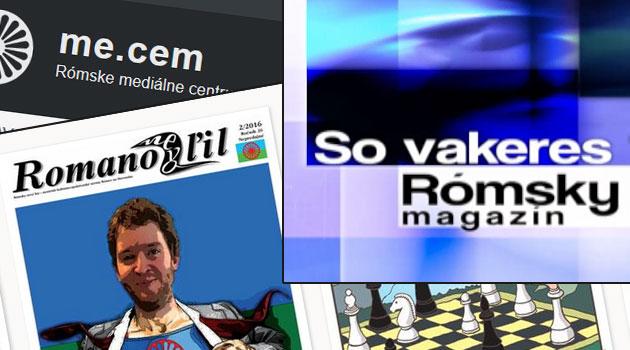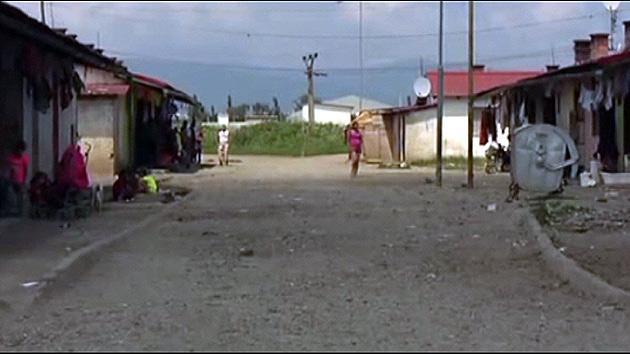The media market in Slovakia is small, but the Romani media market is even smaller. What’s worse, the prospects of its developing and stabilizing are nowhere in sight.
In print form, the Romani media experienced its biggest boom at the beginning of the 1990s. It didn’t last long – just a couple of years.
After that, the problem began – not with the people, but with a lack of finances. The only periodical that has been coming out for 26 years non-stop is the newspaper “Romano nevo l’il“, which has come out every year in good times and bad.
The newspaper’s circulation has changed. Up until 2010, “Romano nevo l’il” was produced in a print run of 12 000.
The editors always managed to capture the most important events taking place during the year. Even though its critics questioned the value of publishing some of the information (because it was “old” at the time it came out), it is precisely this publication that has been documenting the history of Romani people from the beginning of democracy in Slovakia.
This newspaper still has its editorial offices at the same address. It is true, however, that in the building where the paper is headquartered it has had to move twice during the last five years into cheaper, smaller spaces.
The editors managed to maintain a permanent staff until 2011. For the past five years they have hired freelancers only and the editors have all taken other paid work.
The cause of this decline has been state subsidies delivered with delays and a smaller overall budget, reducing the circulation to 4 000. The crisis for the “print” media was abetted by the development of online social networking sites, which are a faster source of current information.
Delayed subsidies stop even the Government Plenipotentiary for Roma Community Affairs
A small spark of hope for the development of the Romani “print” sector arrived in 2013. The Romani Media Center Mecem revived its publication of the newspaper “Rómske listy“.
Former Slovak Government Plenipotentiary for Roma Community Affairs Peter Pollák also joined the print media sector as well. He began a bureaucratic/party newspaper, “Romane nevipena“, that was published by an advertising agency in Žilina.
Pollák’s ambition was to publish from the beginning of the calendar year, but he did not fully succeed. In 2014 the newspaper came out only during the first three months of the year.
During 2015 the situation was no different, with the newspaper not resuming until the second half of the year. Meanwhile, “”Rómske listy“, published by Mecem, ended its activity that year and even had to return the subsidy it received because some of the planned issues were never released.
The publishing house did not seek another subvention for 2016. So, in less than two years, we have returned to having only one printed periodical, “Romano nevo l’il”, covering Romani issues in Slovakia.
Roma create their media content themselves
Traditional electronic media such as radio and television have recently been expanded to include the Internet and social networking. Until the end of 2014, Romani television magazine programs and Romani radio programs were exclusively produced by the Roma Media Center Mecem.
A new association, Romed (Roma Media) took over this production in 2015. These were not complete newcomers, but people who had left Mecem to start anew.
At the end of 2015 a tender was issued for new suppliers of radio and television magazine programs about the Romani environment by Slovakia’s public broadcaster, RTVS. This year radio and television magazine programs are being produced for RTVS by three organizations: Gipsy Television (European Media Centre), Jekhetane-Spolu (the publisher of “Romano nevo l’il”) and Romed (formerly part of Mecem).
This change has supported diversity of content, genre and visual style and has ended the many years of one supplier holding a monopoly. If we take a closer look, however, the public broadcaster itself has almost no Romani editorial presence even though, as the second-largest minority in Slovakia, the Roma certainly deserve one.
Romani content editors at RTVS are needed especially to perform coordination and dramaturgical roles. They are needed to review topics, discuss content, and distribute tasks among the individual suppliers as this is customary and normally done at other broadcasters.
The problem of amateurs versus professionals
The supplier of a Romani radio broadcast must deliver a complete 20-minute broadcast, finalized in terms of content and technical parameters, in two languages, following a certain structure, for EUR 50. That amount of money is supposed to cover the costs of the moderator, technology, and travel costs for preparing the reportage.
A professional employed by the RTVS would have access to the public broadcaster’s own technology and vehicles, access to news databases, and access to devices for communications and recording – and would generate costs. By comparison, the Roma suppliers are so cheap that the public broadcaster must be rubbing its hands together with satisfaction.
They are fulfilling their obligations and broadcasting Roma. The suppliers take up no editorial space at the institution at all and don’t get in the way.
Too few professional producers
If we look at the creation of documentary films about Romani topics in Slovakia, there is not a lot to see. The Roma Media Center Mecem has also produced documentaries in addition to the Romani magazine programs.
Today neither Mecem nor Roma Media are producing any new documentaries. Instead their production has begun to be undertaken by the EduRoma civic association.
In their film called “Tvůj čas” (“Your Time”), they sought an answer to the question of how things are going with Romani politicians in the Czech Republic and Slovakia since 1989. In their second documentary, “Rómovia ’89” (“Roma ’89”), they presented some Romani personalities 25 years after the 1989 Velvet Revolution.
Jozef Banyákem, a cameraman, director and producer, also dedicates himself to documentaries. In the world of film his name is well-known, as he has created films for commercial television stations and for the public broadcaster.
Banyákem is the best-known Romani figure in Slovak film. The association Jekhetane-Spolu, which publishes “Romani nevo l’il”, has also been involved in documentary production since 2010 and has produced 14 films during the past six years in collaboration with Living Documentary Bratislava.
Portraits of middle-class Roma missing
Since we at Jekhetane-Spolu have experience with film production, we submitted video production proposals to the public broadcaster in Slovakia. We were not interested, however, in producing classic magazine programs reporting on current events.
We wanted to produce magazine programs focused on culture and people, portraits of Romani figures. We agreed with the public broadcaster that we would produce five special magazine segments for them this year.
One of those segments was to be focused on the Roma Holocaust. The first two magazine segments were broadcast in May and in June of this year.
The magazine segment about the Roma Holocaust was to have been broadcast this month. We agreed to produce it in April with the agreement that it would be broadcast on 2 August.
Even though we delivered the segment as agreed, it was not broadcast as agreed. Supposedly it will be broadcast in September – apparently the communications about the segment inside the RTVS broke down somehow.
Probably not everybody has noticed that the Romani magazine segments on the public broadcaster are no longer being produced by just one organization, but the numbers involved must also be mentioned. To produce a 26-minute television magazine segment, our group is paid EUR 1 980.
If you divide that amount of money up between hiring people and paying for incidental expenses, a decent number of people are involved in doing the work. For the RTVS to produce these segments in-house would obviously be much more expensive.
Reprinted with the kind consent of the author from Romovia.sme.sk.

